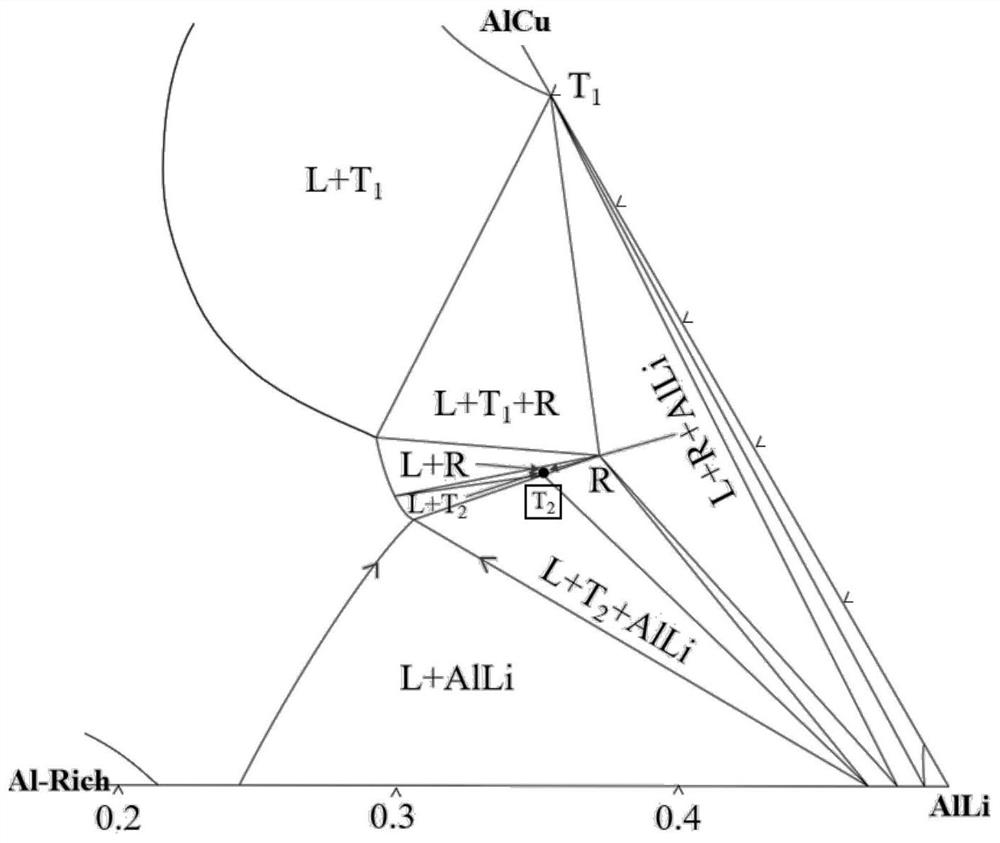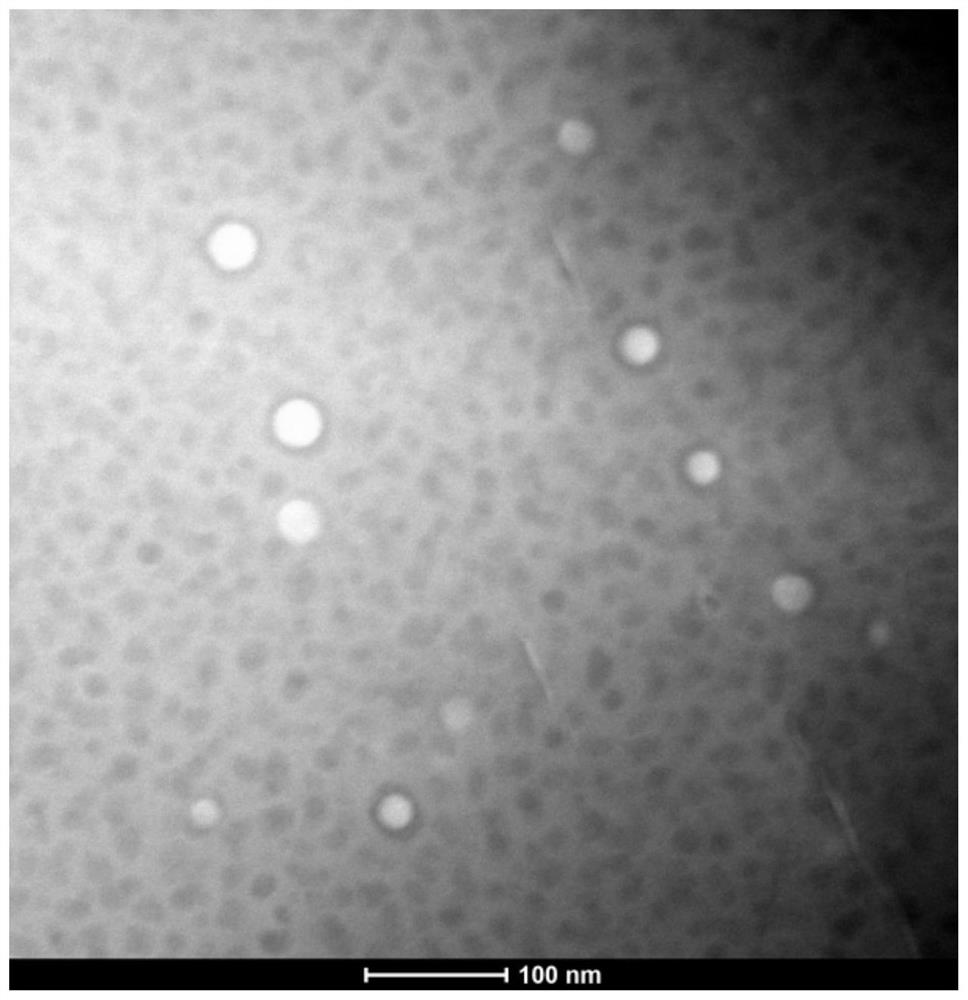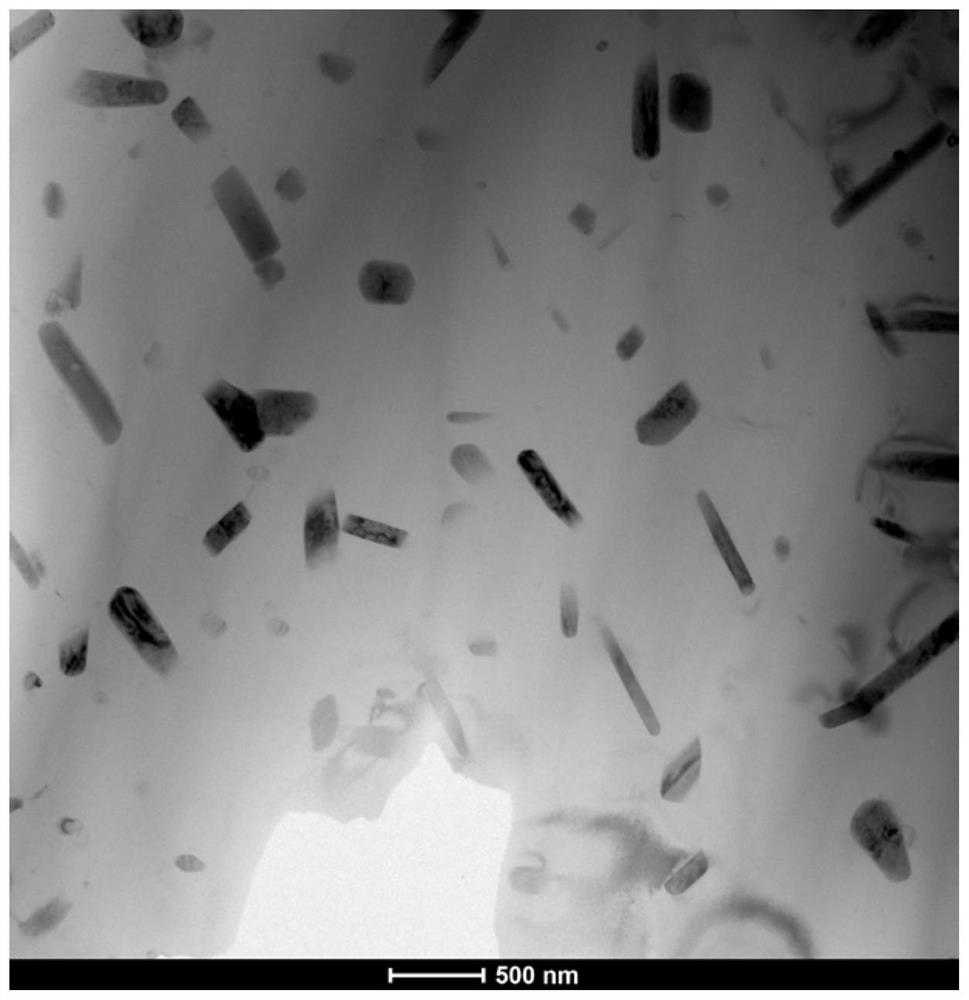Alloying method for inducing icosahedron quasicrystal phase to be subjected to in-situ synthesis to reinforce cast aluminum-lithium alloy
An in-situ self-generated and icosahedral technology, applied in the field of in-situ self-generated and strengthened cast Al-Li alloys induced by quasi-crystalline phases, can solve the problems of aggravated coplanar slip tendency and decreased strength and toughness of the alloy
- Summary
- Abstract
- Description
- Claims
- Application Information
AI Technical Summary
Problems solved by technology
Method used
Image
Examples
specific Embodiment approach 1
[0031] Specific implementation mode 1: This implementation mode is an alloying method for in situ authigenic casting aluminum-lithium alloy induced by icosahedral quasi-crystal phase, which is specifically carried out according to the following steps:
[0032] 1. Select pure aluminum, pure magnesium, pure lithium particles, Al-50Cu master alloy, Al-4Zr master alloy and aluminum-based master alloy containing alloying elements, and then remove the surface oxide scale and surface layer from the above-mentioned selected raw materials;
[0033] Wrap pure magnesium and pure lithium particles with aluminum foil;
[0034] The aluminum-based master alloy containing alloying elements is an Al-10Ni master alloy, and the finally prepared aluminum-lithium alloy is composed of: 1.8% to 3.2% Li, 0.5% to 2% Cu, 0.5% %~1.8% Mg, 0.04%~0.21% Zr, 0.2%~0.95% Ni, and the rest is Al;
[0035]The aluminum-based master alloy containing alloying elements can also be an Al-4V master alloy, and the fina...
specific Embodiment approach 2
[0038] Specific embodiment 2: The difference between this embodiment and specific embodiment 1 is that the aluminum-based master alloy containing alloying elements described in step 1 is an Al-10Ni master alloy, and the final prepared aluminum-lithium alloy is divided by mass The array is: 2.51% Li, 1.11% Cu, 1.38% Mg, 0.21% Zr, 0.24% Ni, and the rest is Al. Others are the same as the first embodiment.
specific Embodiment approach 3
[0039] Embodiment 3: The difference between this embodiment and Embodiment 1 or 2 is that the aluminum-based master alloy containing alloying elements described in step 1 is an Al-10Ni master alloy, and the aluminum-lithium alloy finally prepared is as follows: The mass fraction composition is: 2.35% Li, 0.96% Cu, 1.22% Mg, 0.19% Zr, 0.44% Ni, and the rest is Al. Others are the same as those in Embodiment 1 or 2.
PUM
| Property | Measurement | Unit |
|---|---|---|
| Diameter | aaaaa | aaaaa |
| Lattice constant | aaaaa | aaaaa |
| Radius | aaaaa | aaaaa |
Abstract
Description
Claims
Application Information
 Login to View More
Login to View More - R&D
- Intellectual Property
- Life Sciences
- Materials
- Tech Scout
- Unparalleled Data Quality
- Higher Quality Content
- 60% Fewer Hallucinations
Browse by: Latest US Patents, China's latest patents, Technical Efficacy Thesaurus, Application Domain, Technology Topic, Popular Technical Reports.
© 2025 PatSnap. All rights reserved.Legal|Privacy policy|Modern Slavery Act Transparency Statement|Sitemap|About US| Contact US: help@patsnap.com



